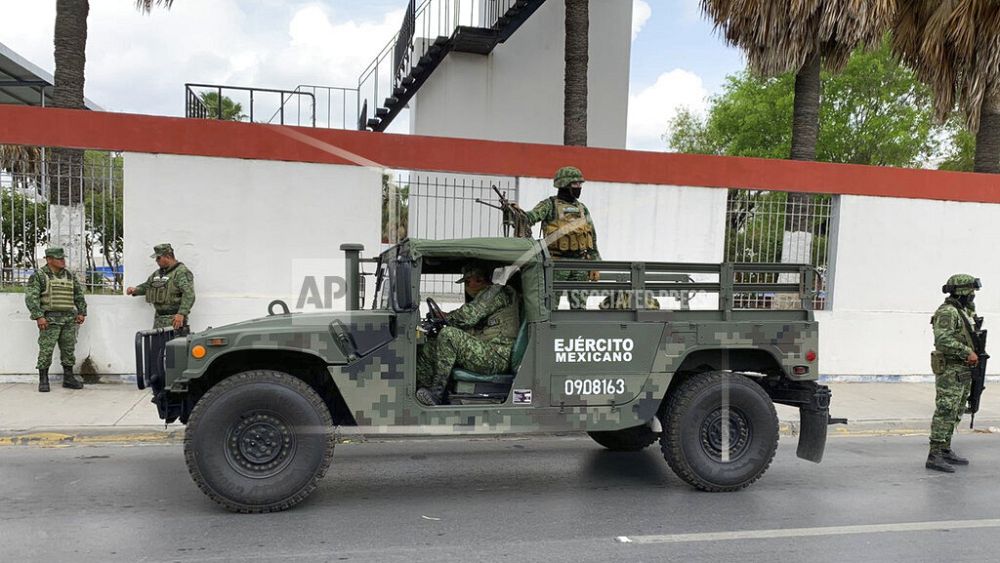This week, sombre news came of the deaths of two Americans who had travelled with two other companions to Mexico in search of health care.
The four were headed to Matamoros, once a popular spring break destination but now overrun with violence from cartel infighting.
The group were caught in a deadly shootout shortly after entering the city and kidnapped by armed men. Two died during the incident, while the other two were rescued on Tuesday.
Their plight has been a warning to the many US citizens who travel into Mexico seeking cheaper medical care.
American tourists kidnapped and killed in Mexico
Hailing from South Carolina, the four US citizens travelled to Matamoros in Tamaulipas state from Brownsville at the southernmost tip of Texas.
One of the four was reportedly making the journey in order to undergo 'tummy tuck' surgery.
Upon entering the Mexican city, their vehicle came under fire. The FBI released a statement saying the four Americans were kidnapped and taken from the scene by armed men.
A video posted on Facebook appears to show the four being loaded into the truck. One is clearly alive, but the others look dead or wounded.
On Tuesday, Mexican authorities confirmed that two had been killed while the other two had been rescued and taken back to the US.
Matamoros: From spring break destination to drug-violence capital
Matamoros was once a popular holiday destination for Americans. For years, it welcomed spring-breakers on nights out during ‘two-nation vacations’ on Texas’ South Padre Island.
However, the city has been plagued for years now by infighting between powerful drug cartels.
Thousands of Mexicans have gone missing amid the turmoil. Some US citizens have also been embroiled, including three siblings who disappeared in 2014 and were later found dead.
Is it safe for Europeans to travel to Mexico?
The tragic incident has spotlighted the violence plaguing Mexico, leaving many wondering if it's safe to travel there.
Of the country's 32 states, the US has Level 4 ('do not travel') advisories on six, including Tamaulipas where Matamoros is located, due to the risks of crime and kidnapping. The other five include Colima, Guerrero, Michoacan, Sinaloa and Zacatecas.
Of the other 26 states, seven have Level 3 ('reconsider travel to') warnings in place and 17 have Level 2 (exercise increased caution) warnings. Quintana Roo - home to the popular tourist destination, Tulum - and Mexico City fall in the Level 2 category due to crime risks.
Campeche and Yucatan states are considered completely safe to travel to.
Why do Americans go to Mexico for health care?
Although Americans have been put off visiting Matamoros for leisure, many risk the journey to save on medical costs, particularly for cosmetic surgery.
The tummy tuck one of the Americans had travelled to Mexico for would have cost between $7,000-$9,000 (€6,637-€8534) in South Carolina clinics while in Matamoros it is estimated to be as little as $2,500 (€2,370).
A face lift can cost up to $14,000 (€13,275) in the US state but just $5,000 (€4,741) in Mexico.
Americans also leave the country for dental procedures, plastic surgery, cancer treatments and prescription drugs - particularly those that are unavailable or expensive in the US. Alongside Mexico, other popular destinations include Canada, India and Thailand.
How to travel to Mexico safely for medical tourism
Despite the attractive costs and sometimes quicker access to treatments, travelling to Mexico for health care is risky.
Those planning on undertaking the journey should check the US government travel alerts for their intended destination.
Trips can also be safer when patients seek assistance from a medical tourism agent. Some hospitals or care providers offer a pick-up service at the airport and transport patients directly to the doctor’s appointment or hotel.
Potential patients should check the credentials and accreditations of their chosen doctor and clinic carefully.
Those who have undergone a procedure in Mexico should also be aware that if complications arise when back home, a US doctor may not be able to access details about the treatment.
This can also make it challenging to sue a doctor or hospital in Mexico.


